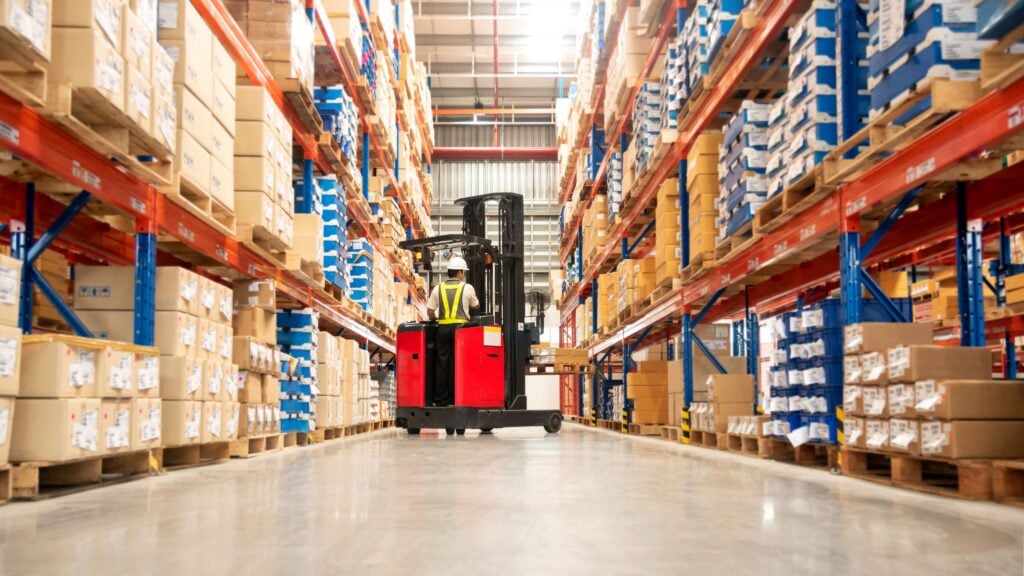Best Practices for Retailers in Building a Circular Economy
What is a circular economy? A circular economy is an economic system where materials maintain their value and nothing becomes waste. Unlike our traditional “take-make-dispose” model, circular systems keep resources in use through practices like reuse, repair, refurbishment, and recycling – creating economic, environmental and social value while reducing dependence on finite resources.
According to the Circularity Gap Report, the volume of discussions, debates and articles addressing the circular economy almost tripled from 2018-2023, reflecting a heightened awareness and interest in circularity.
For procurement and sustainability teams in retail, implementing circular economy principles represents both a strategic necessity and competitive advantage. With supply chain emissions typically accounting for over 80% of retailers’ carbon footprints according to McKinsey and extended producer responsibility regulations expanding globally, material circularity has become central to effective risk management, cost control, and regulatory compliance.
Strategic benefits of circular procurement
Financial performance and risk mitigation
Circular procurement delivers quantifiable business benefits beyond sustainability metrics. According to PwC’s 2023 Supply Chain Resilience Report, organisations implementing structured circular procurement models report:
- 15-20% reductions in total cost of ownership for applicable categories
- 30-40% higher material recovery rates than those without formal procurement controls
- Significantly reduced exposure to virgin material price volatility
- Lower compliance costs through standardised material profiles
Deloitte’s Sustainable Procurement Report found that companies with mature circular procurement programs were 3.5x less likely to face regulatory penalties, making circularity a core risk management concern.
Market differentiation and consumer alignment
Consumer preferences continue shifting toward circular consumption models:
- Products marketed as sustainable grew 7.1 times faster than conventional alternatives according to NYU Stern research
- 53% of consumers who experienced extreme weather purchased sustainable goods (vs. 38% who didn’t)
- Accenture’s Circular Economy research projects circular business models could generate $57 billion in revenue by 2030

Key regulations reshaping procurement strategies
Three regulatory frameworks will significantly impact retail procurement in 2025:
EU Circular Economy Act
Procurement implications:
- EPR fees expected to impact product costs by 3-7% in affected categories
- Mandatory recyclability requirements affecting product specifications
- Required supplier engagement on shared compliance responsibilities
Ecodesign for Sustainable Products Regulation
Data requirements:
- Digital Product Passport implementation requiring 16+ product attributes
- Material composition documentation with chemical-level transparency
- Standardised supplier data provision and verification
According to KPMG, only 12% of retailers currently have sufficient data infrastructure for DPP compliance.
Corporate Sustainability Reporting Directive
Disclosure requirements:
- Material flow accounting integrated with procurement systems
- Circular KPIs in category management
- Quantified impact assessments of circular initiatives
5 strategic approaches to circular procurement
1. Implement data-driven supplier selection
Effective circular procurement requires:
- Material Circularity Indicators integrated into supplier qualification
- Chemical compliance tracking aligned with circular design
- Standardised circularity data collection templates
BSR’s research shows organisations with data-driven circular procurement policies achieve 3.2x higher supplier compliance rates.
2. Design circular product specifications
Procurement teams can drive circular design through:
- Design-for-disassembly requirements
- Repairability metrics in supplier selection
- Lifecycle assessment requirements for new products
Leading retailers are integrating Cradle to Cradle certification requirements into procurement standards.
3. Build closed-loop supply systems
Effective procurement support for circularity includes:
- Supplier agreements with material recapture clauses
- Chain-of-custody documentation for recycled content
- Reverse logistics integration with take-back programs
According to the Ellen MacArthur Foundation, organisations with mature closed-loop procurement achieve 30-40% higher material recovery rates.
4. Establish supplier development programs
Transitioning suppliers to circular models requires:
- Tiered supplier development roadmaps with clear milestones
- Technical assistance for material substitution
- Incentive structures rewarding circular performance
EY research found retailers with formal circular supplier programs achieved 2.3x faster improvement in recycled content integration.
5. Implement circularity performance metrics
Driving continuous improvement requires:
- Material circularity dashboards by category
- Supplier scorecard integration of circular metrics
- Financial incentives tied to circular performance
McKinsey’s research shows organisations with integrated circularity metrics achieve 3.7x faster progress on circular economy goals.
Building the business case
When engaging stakeholders, procurement teams should:
- Quantify financial benefits:
- EPR cost avoidance (3-7% of product costs)
- Resource security improvements
- Working capital optimisation
- Risk mitigation value
- Demonstrate compliance advantages:
- The WBCSD’s Circular Transition Indicators provides a standardised framework for measuring circular economy progress aligned with regulatory requirements.
- Establish clear governance:
- Executive ownership of circular targets
- Integration of metrics in performance evaluations
- Supplier accountability mechanisms
PwC’s ESG Governance Survey shows organisations with formal circular economy governance achieve 2.6x better results.

How Sedex enables circular procurement
Sedex empowers procurement and sustainability teams to drive circular economy outcomes with a suite of integrated tools and services:
- Material Traceability: The Sedex Platform allows teams to map material flows across complex supply networks, establishing baseline metrics for circularity and pinpointing where interventions can have the greatest impact.
- Supplier ESG Assessment: By leveraging self-assessment questionnaires and SMETA audit data, procurement can collect key environmental indicators-such as waste generation, recycling rates, and material usage-helping identify suppliers with strong circular economy potential and those needing support.
- Risk Evaluation: Sedex’s risk mapping and audit insights provide visibility into suppliers’ environmental practices, enabling procurement to collaborate more effectively with partners and encourage the adoption of material recovery and recycling processes throughout the supply chain.
- Compliance Documentation: With standardised data collection and third-party verification, Sedex supports procurement teams in meeting emerging regulatory requirements, such as those related to circularity and sustainability reporting, while ensuring robust, auditable documentation.
By integrating Sedex’s Platform, SMETA audit, and professional services into procurement processes, businesses can accelerate their transition to a circular economy-reducing waste, improving resource efficiency, and building more resilient, sustainable supply chains.
Case Study: PNJ Production Circular Transformation See how Sedex helped a manufacturer implement circular principles throughout their production process in our PNJ Production case study. The partnership resulted in 35% waste reduction, 20% improvement in material efficiency, and significant cost savings through closed-loop material recovery systems.




